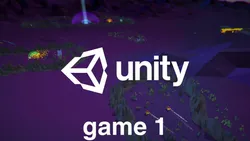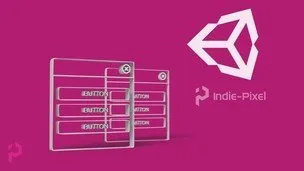
Prototyping Virtual Reality Experiences with Unity 
This course provides an introduction to prototyping Virtual Reality experiences with Unity, allowing users to quickly and efficiently develop and test their ideas. ▼
ADVERTISEMENT
Course Feature
![]() Cost:
Cost:
Free Trial
![]() Provider:
Provider:
Pluralsight
![]() Certificate:
Certificate:
Paid Certification
![]() Language:
Language:
English
![]() Start Date:
Start Date:
On-Demand
Course Overview
❗The content presented here is sourced directly from Pluralsight platform. For comprehensive course details, including enrollment information, simply click on the 'Go to class' link on our website.
Updated in [April 29th, 2023]
This course, Prototyping Virtual Reality Experiences with Unity, provides an introduction to the process of quickly designing and testing VR experience prototypes. Students will learn how to create interactive elements and game play elements, as well as the benefits of analog testing new game mechanics before implementing them in an experience. Upon completion of the course, students will have a foundational knowledge of prototyping VR experiences with Unity, which will help them create robust and engaging Virtual Reality experiences.
[Applications]
Upon completion of this course, individuals will be able to apply their knowledge of prototyping virtual reality experiences with Unity to create robust and engaging virtual reality experiences. They will be able to quickly design VR experience prototypes, and determine if a concept is ready for full time development. Additionally, they will be able to populate an environment with interactive elements and game play elements, as well as explore the benefits of analog testing new game mechanics before implementing them in an experience. Finally, they will be able to take what they have learned from analog and user testing to implement new mechanics and game play.
[Career Paths]
1. VR Developer: VR developers are responsible for creating and developing virtual reality experiences. They use a variety of tools and technologies, such as Unity, to create immersive and interactive experiences. VR developers must have a strong understanding of 3D modeling, animation, and game design principles. As the demand for VR experiences continues to grow, the need for experienced VR developers is expected to increase.
2. VR Designer: VR designers are responsible for creating the look and feel of a virtual reality experience. They use a variety of tools and technologies, such as Unity, to create immersive and interactive experiences. VR designers must have a strong understanding of 3D modeling, animation, and game design principles. As the demand for VR experiences continues to grow, the need for experienced VR designers is expected to increase.
3. VR Animator: VR animators are responsible for creating the motion and animation of a virtual reality experience. They use a variety of tools and technologies, such as Unity, to create immersive and interactive experiences. VR animators must have a strong understanding of 3D modeling, animation, and game design principles. As the demand for VR experiences continues to grow, the need for experienced VR animators is expected to increase.
4. VR Programmer: VR programmers are responsible for coding and programming the virtual reality experience. They use a variety of tools and technologies, such as Unity, to create immersive and interactive experiences. VR programmers must have a strong understanding of 3D modeling, animation, and game design principles. As the demand for VR experiences continues to grow, the need for experienced VR programmers is expected to increase.
[Education Paths]
Recommended Degree Paths:
1. Bachelor of Science in Computer Science: This degree path provides students with a comprehensive understanding of computer science fundamentals, including programming, software engineering, and computer architecture. Students will also learn about the development of virtual reality applications and how to create prototypes for them. Additionally, this degree path will provide students with the skills to develop and maintain virtual reality applications.
2. Bachelor of Science in Game Design: This degree path focuses on the design and development of video games, including virtual reality games. Students will learn about game design principles, game mechanics, and game development tools. Additionally, students will gain an understanding of the development of virtual reality applications and how to create prototypes for them.
3. Master of Science in Virtual Reality: This degree path provides students with an in-depth understanding of virtual reality technology and its applications. Students will learn about the development of virtual reality applications, how to create prototypes for them, and how to use virtual reality technology to create engaging experiences. Additionally, students will gain an understanding of the development of virtual reality applications and how to create prototypes for them.
Developing Trends:
1. Augmented Reality: Augmented reality (AR) is becoming increasingly popular in the development of virtual reality applications. AR allows developers to create immersive experiences that combine virtual elements with the real world. This technology is being used to create interactive experiences that can be used in a variety of applications, including gaming, education, and entertainment.
2. Artificial Intelligence: Artificial intelligence (AI) is being used to create more immersive and engaging virtual reality experiences. AI can be used to create virtual characters that can interact with users in a realistic way. Additionally, AI can be used to create virtual environments that can respond to user input in a realistic way.
3. Cloud Computing: Cloud computing is being used to create more powerful virtual reality applications. Cloud computing allows developers to access powerful computing resources in the cloud, which can be used to create more complex virtual reality experiences. Additionally, cloud computing can be used to store and share virtual reality applications with users.
Course Provider

Provider Pluralsight's Stats at AZClass
Pluralsight ranked 16th on the Best Medium Workplaces List.
Pluralsight ranked 20th on the Forbes Cloud 100 list of the top 100 private cloud companies in the world.
Pluralsight Ranked on the Best Workplaces for Women List for the second consecutive year.
AZ Class hope that this free trial Pluralsight course can help your Unity skills no matter in career or in further education. Even if you are only slightly interested, you can take Prototyping Virtual Reality Experiences with Unity course with confidence!
Discussion and Reviews
0.0 (Based on 0 reviews)
Explore Similar Online Courses

Introduction to Spring Boot 2 and Spring Framework 5

IoT Microcontrollers: Onboarding a Raspberry Pi Using Raspbian

Python for Informatics: Exploring Information

Social Network Analysis

Introduction to Systematic Review and Meta-Analysis

The Analytics Edge

DCO042 - Python For Informatics

Causal Diagrams: Draw Your Assumptions Before Your Conclusions

Whole genome sequencing of bacterial genomes - tools and applications

Learn Unity 3D and C# By Making a Full Game (2023)

Asset Creation and Management


Start your review of Prototyping Virtual Reality Experiences with Unity